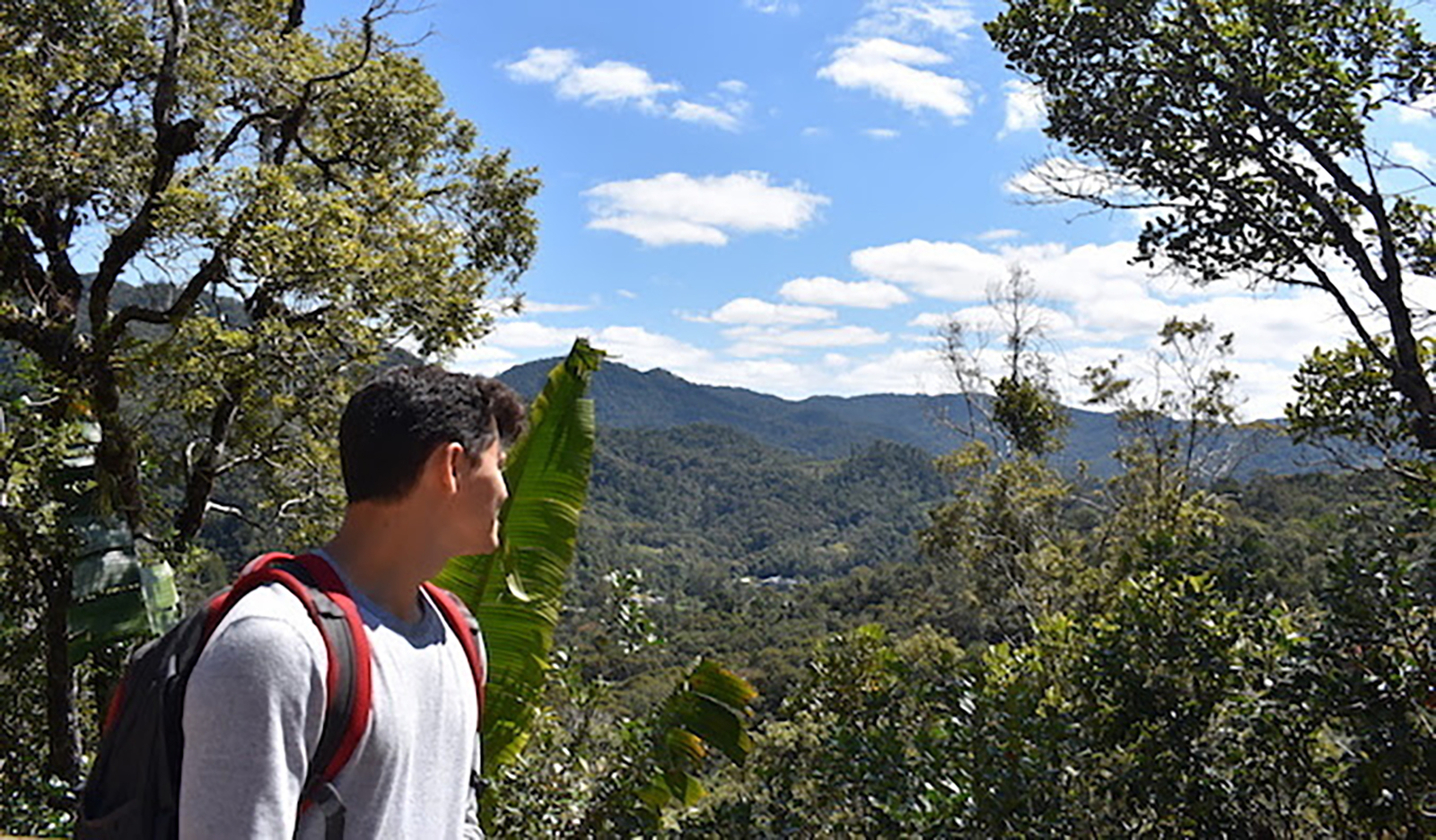Nomadic Matt and COVID-19

Austin-based travel writer and New York Times bestselling author, Matt Kepnes, shares his COVID-19 experience.
“Hey everybody! Greetings from inside my apartment,” Matthew Kepnes, a world traveler — and fellow Austinite —begins in an Instagram Story Highlight titled “COVID-19”.
The black and white text, pinned to the upper half of the screen reads “Hello from Quarantine!” followed by more black and white text on the lower half of the screen: “Where I will be here for a long time!”
After a trip around the world in his early twenties, Matthew Kepnes wanted to find a way to continue his travels while also paying the bills. Soon after, he became a freelance writer and eventually launched his own brand and travel network, Nomadic Matt and The Nomadic Network.
Even though he’s lived all around the world, the New York Times bestselling author of “How to Travel the World on $50 a Day: Travel Cheaper, Longer, Smarter” recently settled into his new home: Austin — drawn to Austin’s “big little city” atmosphere.
In mid-March, Kepnes tested positive for COVID-19.
After coming home to Austin from New York City and Paris, Kepnes said his symptoms developed in the form of a cough, which was eventually accompanied by aches, pains, fever and fatigue.
“I mean I had a really mild case,” Kepnes says through the phone.
Since he didn’t know anyone who had been sick with the virus, Kepnes says he must have contracted it from a stranger.
“I’d be exhausted by about midday,” Kepnes says. “I’d wake up at nine and by two I’d be like ‘time to go back to bed.’”
Kepnes said his coughs came from deep within his chest and that they lasted for about two weeks. The aches and pains lasted for three or four days, as did the fever, Kepnes said.
“It was like a really, really rough cold,” Kepnes says.
When he was sick, Kepnes says he did his best to maintain his health. He took vitamins everyday, ate healthy foods and slept a lot, trying to keep his immune system up, in addition to taking Tylenol to keep the fever down.
In addition to working from home, Kepnes says in his COVID-19 Instagram story highlight that he has been doing a lot of reading and writing in hopes of keeping himself entertained.
“I have been cooking a lot and FaceTiming people a lot,” Kepnes writes in blue and white text in the Instagram story highlight.
Even though his case was mild, Kepnes says the experience did make his anxiety spike.
“I wasn’t too worried, but then you know, you sit at home and you read everything online, and then you read about all these cases where people were fine and then, day eight, they’d just like — be intubated,” he says
With age-old sicknesses like the common cold and flu, Kepnes says, it’s easy to understand and identify what one is experiencing because the illnesses have been around for years.
“We don’t really have that with coronavirus so that was the scary part of it,” Kepnes says. “When it didn’t get worse, I relaxed more,” Kepnes says.
Kepnes has been very public about his COVID-19 experience on social media, vocalizing his issues and frustration with testing.
“You can never really know if you’re in the clear of it unless they retest you,” Kepnes says.
According to the Center for Disease Control and Prevention (CDC), if one is not retested, then “you can leave home after these three things have happened: You have had no fever for at least 72 hours (that is three full days of no fever without the use medicine that reduces fevers) and other symptoms have improved (for example, when your cough or shortness of breath have improved) and at least seven days have passed since your symptoms first appeared.”
“More people have it than you think,” Kepnes says in an Instagram post from March 16. “If you feel sick, take your temp. If you have one, get tested. I had a mild case that could easily be confused as a bad cold. If it wasn’t for my recent travels, I would have dismissed it as such. Get tested.”
It is known that COVID-19 can be unpredictable and can linger in some people more than others.
“They just don’t know enough about the virus to be able to say, once you don’t show symptoms, you’re not contagious anymore,” Kepnes says.
In addition to staying inside due to Austin’s Stay-At-Home order, Kepnes says he stayed quarantined at home long past the few days advised by the CDC, just to be safe.
As for current travel, Kepnes advises in an IG post from March 20, that we should all contribute to flattening the curve and do our best to reduce transmission rates by not travelling for the time being.
“The world will be waiting for us when this is all over,” Kepnes writes in the IG post.
The seasoned travel writer reckons the future of travel could change by possibly having more health/temperature checks at airports and estimating that some countries may even require a traveller to prove they are COVID-19 negative.
What’s next for the world traveller? Kepnes, also on instagram as @nomadicmatt, says his first travel destination post-pandemic would ideally be somewhere in the Caribbean.
“On the beach, in the sun, in the water — hiking the mountains for as long as humanly possible,” Kepnes says.






